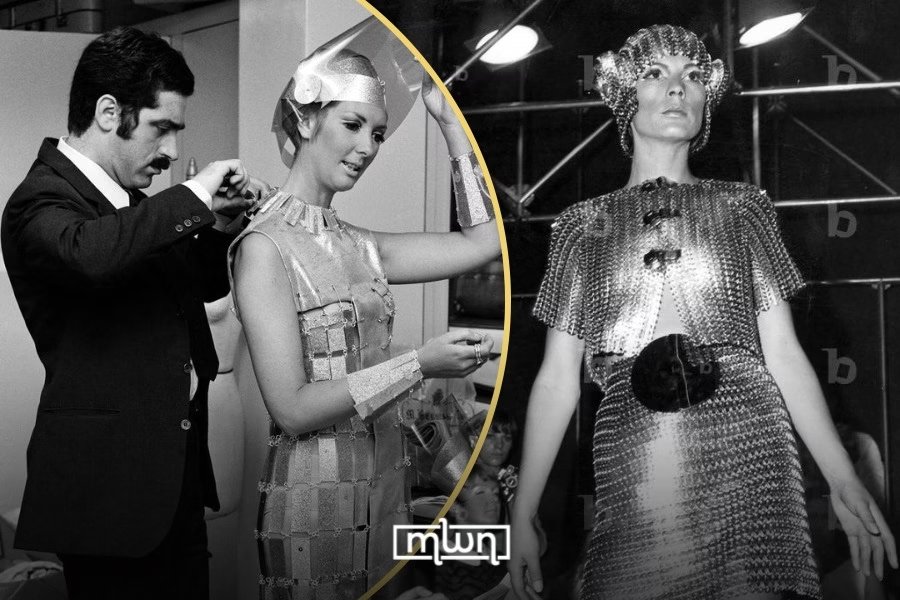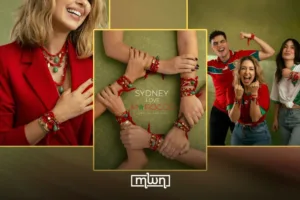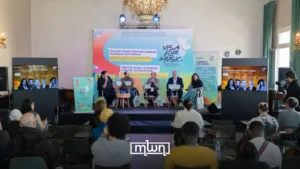The Spanish visionary changed fashion forever the moment he swapped fabric for metal.
Fez – In the 1960s, fashion got tired of playing it safe. Designers were dreaming in chrome, thinking in geometry, and drawing inspiration not from history, but from the future, from space, from science fiction, from an era not yet lived.
And right at the heart of this radical moment stood Paco Rabanne: the Spanish-born visionary who swapped fabric for aluminum and called it fashion.
His real name was Francisco Rabaneda Cuervo, born in Spain in 1934. When the Spanish Civil War pushed his family to Paris, fate took a stylish turn, his mother worked for none other than Cristóbal Balenciaga.
But Rabanne didn’t follow the expected path. He trained as an architect, and while others were sketching buildings, he was thinking about how to build dresses like sculptures, engineering, not just designing.
Before launching his own label, Rabanne made accessories for major houses like Dior and Givenchy. But in 1966, he went all in, unveiling a debut collection that still echoes through fashion history.
Titled “The 12 Unwearable Dresses”, it was a parade of bold experimentation, held at the George V hotel in Paris. The dresses were made of plastic, aluminum, and a curious material called Rhodoid, shaped into disks linked with metal rings.
No thread. No fabric. Just metal and vision. Rabanne called it “mechanical assembly”, the rest of the world called it a revolution.
The show itself was a performance. Models walked barefoot, accompanied by music, and, another first, Black models were front and center on the runway.
Rabanne didn’t just challenge style norms; he flipped the script on the entire industry. That’s how he earned the nickname “The Engineer of Metal Fashion”, a title he more than deserved.
But the crown jewel of that movement was the metal dress. Designed in 1966, this dress was constructed entirely from interlinked aluminum plates: zero fabric, all structure.
It wasn’t just fashion, it was sculpture you could wear. The silhouette, the shimmer, the sound it made, it was pure performance art. Decades later, it still looks like it belongs in tomorrow.
Fast forward to today: Rabanne’s legacy is alive and well thanks to Julien Dossena, who took over as creative director in 2013.
He didn’t just revive Rabanne’s aesthetics, he evolved them. Lighter materials like lurex and aluminum mesh replaced the heavier metals, giving the metallic look a modern ease.
Dossena kept the spirit intact: bold, architectural, and futuristic, but now with movement and softness.
Celebrities haven’t missed the memo. Beyoncé dazzled in a golden Rabanne piece on stage.
Dua Lipa wore a silver version that caught every flashbulb. Gigi Hadid and Anya Taylor-Joy both embraced the metallic aesthetic with their own red-carpet twists.
What Paco Rabanne did in the sixties wasn’t just shock value or gimmick. It was the start of a conversation between fashion and the future, one that still resonates today.
The metal dress is not a relic. It’s a symbol of what happens when a designer dares to ask “what if?”and doesn’t wait for permission.
And maybe that’s the real power of Rabanne’s legacy: it didn’t aim to please, it aimed to provoke. And somehow, even now, it still does.
















